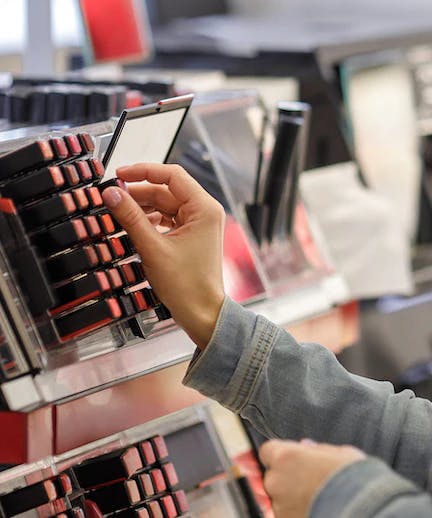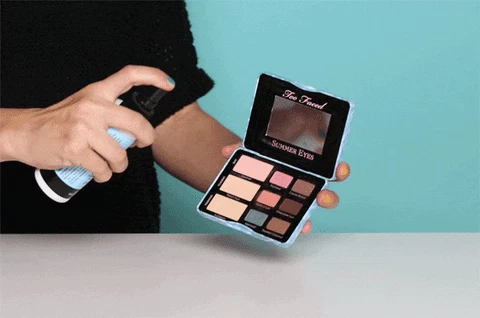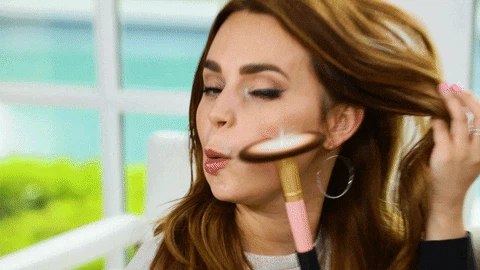This Viral TikTok Video Confirms Our Biggest Fears About Trying Beauty Testers At Sephora
Justly labeled as "gross," "terrifying," and "disgusting" by the majority of commenters, a viral TikTok video warning against trying beauty testers at Sephora has recently been spreading like wildfire.

Trying beauty testers before deciding whether you like the product enough to purchase it is a rite of passage for every beauty enthusiast. However, chances are that at some point in your life, you have been warned against doing this. And we can all assume why this might be, but that doesn't make seeing the proof any less shocking.
We're here to break down the video and the potential risks of this seemingly innocent practice while also providing a few safer ways to test beauty products at stores.
Beauty Testers at Sephora Are Ridden with Contaminants
We are all aware of the environment beauty testers are kept in, to some degree. However, seeing it first-hand, as a viral TikTok video showed us this month, brings on a whole new level of concern.
The video posted by Pamela Pedroza (@pamelapedrozaa), a makeup artist with 1.2 million followers on TikTok, came as a response to a previous comment requesting her to test the bacteria on a beauty tester at Sephora.
The creator starts the video by collecting samples from a display of the Fenty Beauty Cheeks Out Freestyle Cream Blush and the Charlotte Tilbury Superstar Lips Lipstick. Pedroza then swabs the samples onto a petri dish before incubating the contents for two days.
A couple of days later, she shocks viewers by presenting a petri dish filled with mold and what looks like generations of various strains of bacteria, some of which have even formed biofilms during incubation, allowing them to be more resilient and even survive disinfection.
The video sparked a debate in the comments, with some users being rightfully horrified by the outcome of this experiment, while others who were not surprised by the results chimed in to warn about the unsanitary conditions in which beauty testers are kept.
There were even comments from former Sephora employees pleading with people not to try beauty testers at the chain store without the help of a sales assistant who has been trained on adequate sanitization techniques. Other people suggested you should skip all that and just buy the product or a mini version of it, which is usually cheaper and doesn't come with the risk of adverse effects such as skin infections.
Some Potential Risks of Trying Beauty Testers at Stores
Despite the differences in opinion over how you should go about trying beauty testers, we can all agree on two things: Beauty testers at Sephora are ridden with contaminants, and putting them on your skin could come with consequences. Here are just a few common conditions that could be the result of trying contaminated beauty testers – and they actually occur more frequently than you would probably imagine!
Conjunctivitis
Conjunctivitis, or pink eye, is an inflammatory condition due to a bacterial or viral infection. The microorganisms responsible for causing conjunctivitis can remain in eye products such as mascaras and eyeliners, and due to it being highly contagious, it can be spread easily through testing these products. Itchy, uncomfortable, and potentially dangerous, conjunctivitis can stick around for several weeks and require antibiotics to clear up entirely.
Cold Sores
Cold sores are the second most common cosmetics-induced infection after pink eye spread through contaminated lip products. Caused by the herpes simplex virus that can survive on surfaces and in cosmetic products for up to several days, cold sores can occur in the form of fluid-filled blisters around or inside the mouth and can be highly uncomfortable, with symptoms lasting for up to a week, depending on the severity of the infection.

Staph Infections
Staphylococcus is a common bacteria that doesn't typically cause harm and lives on the skin or nose. However, when this strain of bacteria starts to multiply and overgrow, health issues might soon follow. And one of the contributing factors to its overgrowth is its abundance on surfaces, such as contaminated beauty testers and makeup brushes that pile up the pathogen on our skin, eventually tipping the balance of our skin's flora.
Staph infections come with symptoms that range from mild skin irritations to more dangerous and systemic conditions, such as bone and joint infections, which is why it's always a good idea to be mindful of what you're putting on your skin, especially when knowing someone else has used it before you.
Is There a Safe Way To Test Products Before Buying Them?
There will never be a completely safe way to test beauty products in stores unless the testers have been freshly opened and you are the first one to try them out.
While this might take the fun out of an enjoyable shopping experience, there are a few practical ways to reduce the risk of infections without having to make a blind purchase that you could potentially regret.
The Packaging Test
Air-tight packaging is considerably safer than a product you would have to dip your fingers into, such as blush, or apply directly to your skin, such as lipstick, in order to try it out. So when you’re testing beauty products at the store, try to stick to those that come in a squeeze tube or pump-type packaging, as this way, you can be sure that the product isn't contaminated through contact with someone else's skin or pathogens in the environment that have accumulated in the formula.
The Color and Smell Test
Contaminated products will likely have noticeable discoloration and an unpleasant odor. These two signs are good indicators that the testers you’re eyeing are best avoided – risking a potential infection could end up costing you much more than you bargained for.
The Prepped Tester
Prepped testers are products that have been opened but are prepped for testing by spraying with a disinfecting agent to reduce the overgrowth of bacteria accumulated on their surfaces.
Every makeup product is prepped differently, which is why asking for help in this situation is essential. For example, when wanting to try a lip product, the sales assistant will scrape off the top layer of the product before spraying disinfectant on it and wiping it with a tissue. For application, the sales assistant will provide you with a small amount of clean product on a disposable swab that you can test on your skin. Although this process may seem longer than simply trying it out yourself, it's considerably safer and will reduce the risk of skin infections.

Ask for Samples
Most stores will actually provide unopened samples! If you've been eyeing a product for a while but don't want to put yourself at risk of infections by trying it out at the store, you can always ask for one that hasn't been opened. A sales assistant will likely give you a small bottle with just enough product to try.
How To Prevent Your Beauty Products from Becoming a Health Hazard
Beauty testers at Sephora are not the only ones that could be potentially hazardous, and contamination can easily occur in your personal products, especially if you're not taking the proper measures to handle them safely.
Acne, dermatitis, and infections are just a few conditions that can appear on the skin from using contaminated beauty products along with dirty tools. Here are some tips to prevent these uncomfortable issues and ensure they don't develop into something worse.
Clean Your Makeup Tools Regularly
Your makeup tools can become a breeding ground for bacteria and other microorganisms if not cleaned frequently and adequately. As we already explained in a similar article where we broke down the dangers of dirty makeup brushes, not cleaning your brushes and sponges regularly can lead to some serious and stubborn inflammatory conditions that are not only uncomfortable to deal with but also present a high risk of permanent scarring. So wash your makeup tools at least once a week to avoid these potentially dangerous conditions!

Use a Stainless Steel Spatula
A stainless steel spatula is an excellent investment that can be disinfected in seconds and used to scrape a small amount of any beauty product onto a clean surface to keep it contamination-free. This way, you won't have to dip your fingers or makeup tools directly into the product and risk adding pathogens that could lead to potential health hazards for your skin.
Change Your Products Before They Expire
If you don't take the necessary measures to keep your beauty products as clean as possible, you might want to consider getting rid of them before they expire. Most beauty products last up to 12 months; however, if they aren't kept free from contaminants as much as possible, they can go bad even before the expiration date. Now is a good time to check your expiration dates and replace any product that might be risky.
Closing Thoughts
While we can’t completely prevent bacteria and environmental pathogens from coming into contact with our skin, we can certainly take a few extra steps to decrease the chances of contamination when it comes to makeup. Whether by opting out of trying beauty testers in stores, asking for an adequately prepped tester, or using our personal beauty products responsibly, there are plenty of ways to avoid the excessive growth of potentially dangerous microorganisms and the health hazards they may bring.
Support our cause and help women reclaim their femininity by subscribing today.